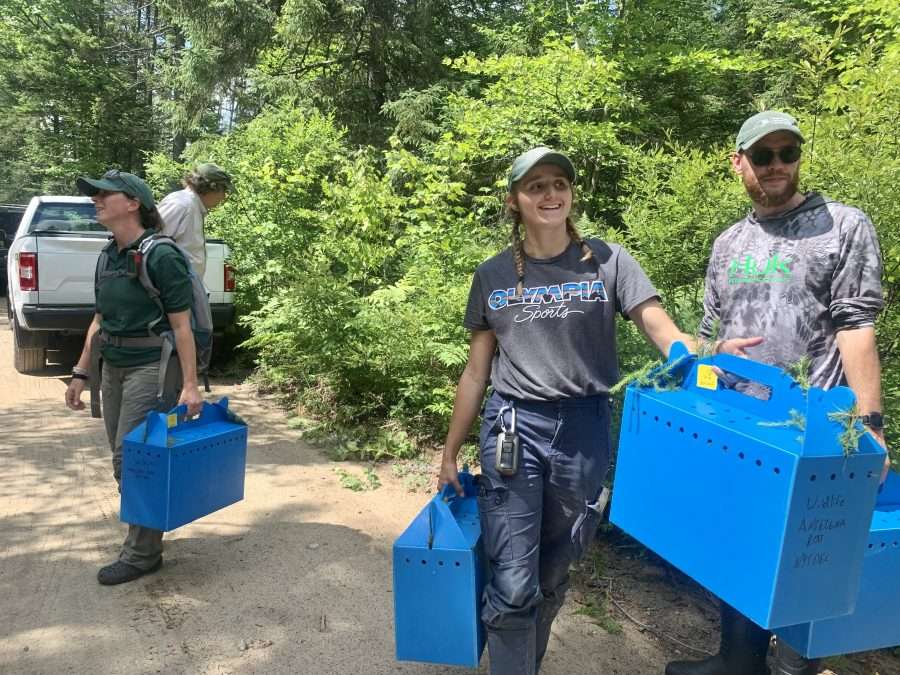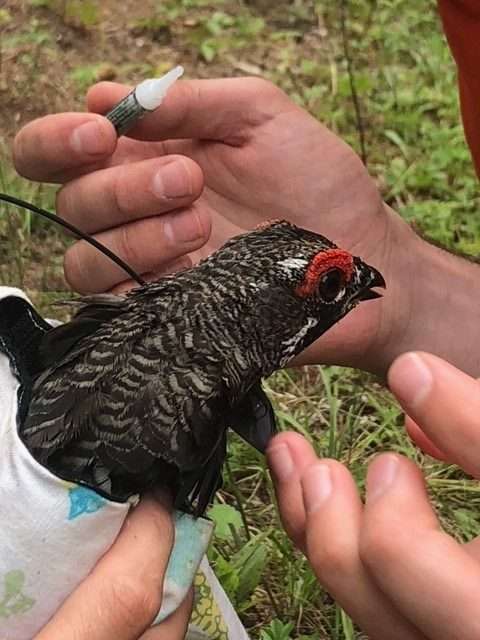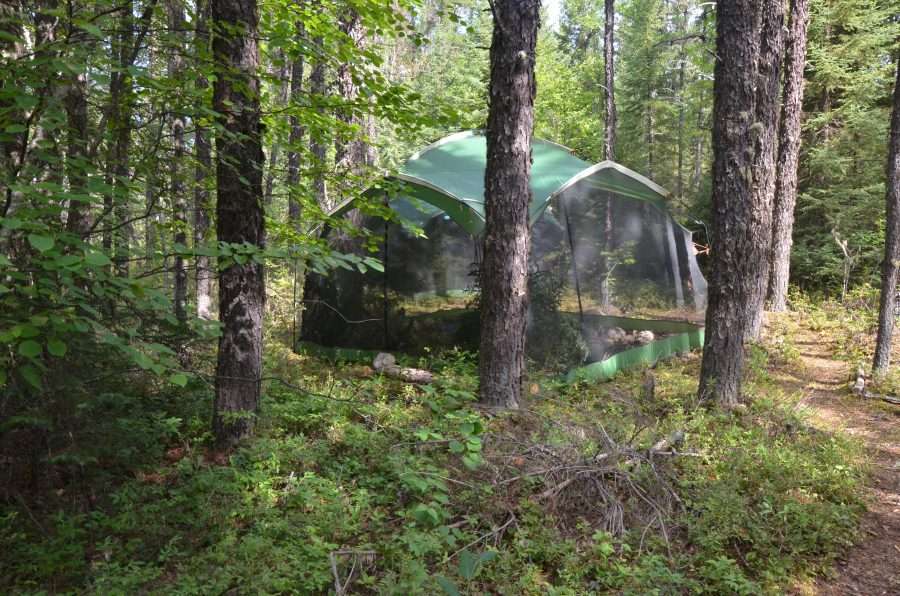
Canadian spruce grouse find new home in Adirondacks
By Chloe Bennett
For the first time since 2019, a team of researchers and scientists relocated dozens of endangered spruce grouse into the Adirondack Park, in hopes of increasing the bird’s population. The translocation project, first organized in 2012, involves capturing the birds out of state and driving them to the Adirondacks.

Angelena Ross is a biologist with the state Department of Environmental Conservation who spearheaded the recovery project with her former biology professor, Glenn Johnson of SUNY Potsdam. Beginning in July, Ross and Johnson, along with a team of DEC researchers, drove 12 hours between Ontario and the Adirondacks with truckloads of spruce grouse packaged with snacks such as blueberries, balsam fir and spruce and tamarack needles. Their Aug. 5 release was the last of three trips.
“It’s pretty cool how the project has evolved,” Ross said of the nine-year-old translocation project. “It’s like going with my other family on a work trip.”
Using 10-foot by 12-foot screened enclosures, the team captured 50 adult spruce grouse with 121 chicks near the town of Cochrane, Ontario. Ross said electric fencing was installed around the structures for the first time to protect the birds from predators. Radio transmitters that can track locations were fastened to 29 birds. Researchers plan to check the tags at least once a week, Ross said.
Spruce grouse have been in decline since the 1800s after logging led to wildlife habitat loss in New York. Now, the species is threatened by the absence of their preferred dwellings and food found in conifer trees, the DEC spruce grouse recovery plan states. To attract more of the endangered species, Ross said the DEC in 2008 used mechanical thinning, a forest management process that creates more ground space for the birds to forage. By 2016, she said, the number of birds had tripled in the area.
“The birds started using the sites within a few years,” she said. “They were dust bathing at the fringes of these little cuts, they were foraging in these more open spaces.”
Ross began working with spruce grouse in 2004 during graduate school at SUNY College of Environmental Science and Forestry. She realized she became intrigued with the bird after seeing it with her classmates. “It’s a very charismatic bird,” she said. “So, it was easy to say, ‘oh, I want to work with them.’”
Maintaining forests for spruce grouse can support other species, Ross said, and may mitigate the effects of higher temperatures in the forests.
“In my mind, I feel like we caused this issue, so it’s important for us to try to fix it,” she said. “The boreal forests are definitely threatened by climate change.”
“It’s going to take a while and there is uncertainty with exactly what’s going to happen to these boreal systems, especially at the edges of ranges of boreal habitat,” Ross said. “But I think it’s important to try to conserve them for the time that we have left.”
Spruce grouse were branded the nickname “fool hen” because of their indifference to humans, Johnson said. Although researchers discourage approaching sites where spruce grouse were released, the DEC recommends reporting sightings by emailing [email protected]. To tell a spruce grouse from the more abundant ruffed grouse, look for darker feathers, a smaller body and a smooth head with no crest.

"bird" - Google News
August 21, 2022 at 03:46PM
https://ift.tt/U2DhxfL
Bringing back an endangered bird - Adirondack Explorer
"bird" - Google News
https://ift.tt/6Zxd1P2
https://ift.tt/0ZQUqDn
Bagikan Berita Ini














0 Response to "Bringing back an endangered bird - Adirondack Explorer"
Post a Comment